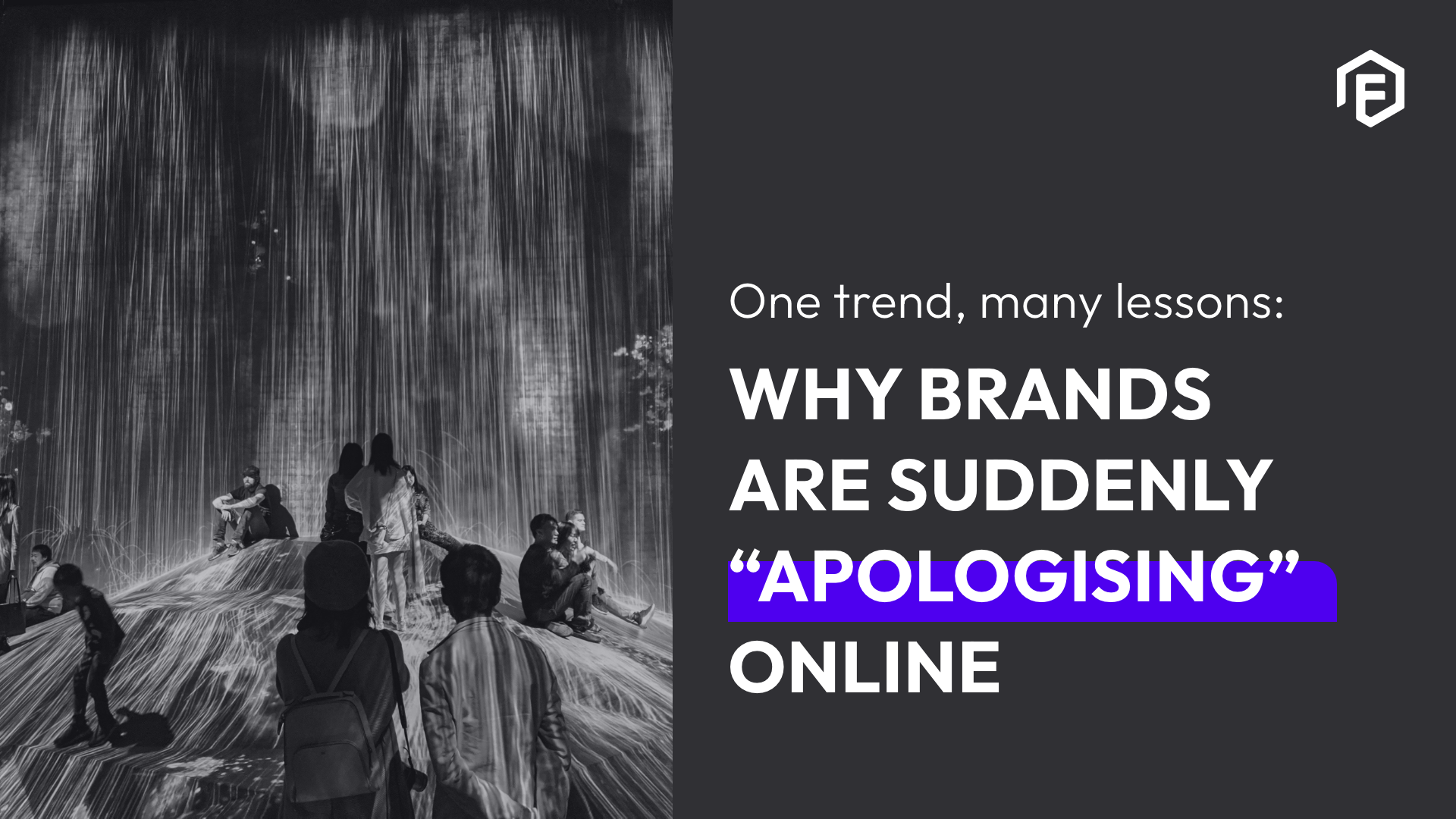Would you pay someone to be your friend? (We hope not… otherwise this is about to get really awkward.)
Just like friends, communities and customers across social media can’t be bought. Trust and credibility are your currency with them. Spend wisely – because that’s how you’ll bank loyalty, conversions, and long-term success for your business.
The digital marketplace is loud, fast and saturated. Add a sprinkle of misinformation, a dash of dodgy influencers, and some customer service horror stories, and you’ve got a recipe for online distrust. Credibility, authenticity and trust aren’t optional anymore.
Period.
They need to be embedded in every pixel of your digital marketing strategy. Especially if you’re in industries like finance, insurance, tech, or healthcare. Basically, if people have to trust you with their money, health, or data, you better show up like you mean it.
Every brand is replaceable (sorry, hon). The thing that makes yours stick is trust. And in this digital economy, credibility isn’t just for decoration – it’s a business model.
Getting Buy In With Your Online Presence
Let’s be honest: we all judge books by their cover. Especially online. First impressions are digital now, and your online presence needs to deliver. Remember: Front of mind is front of wallet.
Here’s what signals “credible brand” in the first 3 seconds:
- Your website: It should load fast, look sharp, and feel legit. Outdated design and broken links? That’s a hard pass.
- Your profiles: From LinkedIn to Instagram, consistency is key. Use high-quality images, clear bios, and updated info across platforms.
- Your content: Ditch the fluff. Post valuable, original content that proves you know what you’re talking about. Think quality over quantity. And it goes without saying that a robust strategy is always essential.
”Crowdfunding” Credibility with Reviews, Testimonials, & Social Proof
People don’t want to hear you say you’re great. They want to hear it from other people. This is where social proof comes in… and it’s your trust incubator and accelerator.
Whether it’s a glowing Google review, a shoutout on X, or a well-written testimonial on your site, it all helps potential customers feel safe saying, “yes”.
Here’s what to tap into:
- Reviews: Encourage them, respond to them, and display them proudly. Even the bad ones (when handled well) can build trust.
- Testimonials: Show them off everywhere. Pro tip: video testimonials? Gold.
- User-generated content: Let your customers co-sign your brand with real-life content and experiences.
- Case studies: These are like proof-of-performance receipts. Use them to walk your audience through the transformation you deliver.
Reinvestment with Community Management & Social Listening
Here’s the tea: Credibility is a commodity. It’s also a two-way street.
Building trust requires engagement, and that means actually talking to your audience. Community management and social listening aren’t just checkboxes; they’re opportunities to deepen your digital marketing credibility.
Here’s how not to drop the ball:
- Reply to DMs and comments. (No, really. Just respond. Do it. We believe in you.)
- Monitor your brand mentions. Know what people are saying and how they’re feeling.
- Join the conversation. Don’t wait to be tagged. Jump in where it makes sense and feels authentic.
- Create feedback loops. Polls, Q&As, surveys – they all make your audience feel heard.
When people see that you care about them, not just their clicks, they’ll trust you more.
Put Your Money Where Your Mouth Is: Be a Force for Good
Let’s get real for a second: People want to buy from brands that give a damn. Being a force for good isn’t just a PR move; it’s part of being credible in the eyes of today’s consumers. Whether it’s environmental efforts, community support, ethical sourcing, or standing up for causes, your values show people who you really are.
And that matters. Credibility in digital marketing is also about conscience.
Ways to show you’re doing more than selling:
- Share your company values (and actually live them).
- Highlight your community work or causes you support.
- Be transparent about your supply chain or sustainability efforts.
Customers want to know what they’re supporting when they support you. Give them a reason to feel good about it.
Thought Leadership
Thought leadership isn’t just for the LinkedIn elite. If you want to build brand credibility, you’ve got to bring insights to the table. That doesn’t mean posting long-winded monologues. You should be offering real, helpful, original ideas that prove you know your industry inside out.
Here’s how to build that authority:
- Write what you know: By writing blog posts, opinion pieces, and whitepapers, you can share your take on the trends, questions, and challenges in your space.
- Speak up: Podcasts, webinars, interviews, or panels allow you to share your unique take (grabs mic).
- Teach something: Educational content builds trust and positions your brand as the go-to source, not just another option.
Being visible is one thing. Being valued for your perspective? Now you’re on the money.
SEO Investment – They Have to Find You to Trust You
Your credibility won’t mean much if no one can find you. (Just ask our Head of HR: https://www.instagram.com/reel/DIgfgJVsVos/?igsh=aHBraW1lMzBmbDZx).
That’s where your SEO strategy becomes crucial… not just for visibility, but for trust-building, too.
Search engines favour trustworthy sites. So, the more helpful, well-structured, and authoritative your content is, the more likely you are to show up in search results and win user trust.
Make sure you’re:
- Targeting the right keywords (like “digital marketing” and “content marketing” (hehe)).
- Publishing content that’s valuable and readable.
- Getting credible backlinks from trustworthy sources (no cheating).
- Optimising for user experience and accessibility.
Showing up when people search builds confidence. Showing up consistently builds loyalty.
Conclusion
Here’s the TL;DR: Trust & Credibility = Revenue.
Your polished content, your SEO efforts, your values, and your interactions will mould how people feel about your brand. And feelings matter. A lot. So while everyone else is chasing vanity metrics, go for the real win: being the brand people believe in.
Your balance sheet and your bank account will also thank you later.
Flume is an independent, full-service digital marketing agency providing services that include SEO, web design and development, public relations, media buying, client service, UX/UI, and creative production. For more information visit www.flume.co.za or email us at [email protected] to say, well, “hello”.
-
Frequently Asked Questions
-
1. Why does it matter if my audience can tell I used AI in my marketing?
- Using AI-generated content without human oversight can make your brand seem lazy or deceptive, eroding trust. Audiences, especially those skeptical of advertising, notice when content feels hollow or overly polished, leading to subconscious distancing that weakens credibility.
-
2. What are the signs that my AI-generated copy is too obvious?
- AI copy often lacks personality, using vague buzzwords (e.g., "innovative solutions"), formal connectors (e.g., "Moreover"), or jarring tone shifts. Other giveaways include overused em dashes, "smart quotes" from tools like ChatGPT, and generic phrasing that feels like it could apply to any brand.
-
3. How can I use AI for copywriting without losing credibility?
- Write in a warm, human tone, edit AI output thoroughly, and use natural transitions like "also" or "but." Avoid AI buzzwords, maintain consistent tone, and tailor language to your audience’s context to ensure the content feels authentic and trustworthy.
-
4. What makes AI-generated visuals look fake, and why does it matter?
- AI visuals often have uncanny details like overly smooth skin, distorted hands, or surreal backgrounds. In industries like beauty or health, these can make products or results seem unreliable, undermining trust. Using real photography or ensuring AI visuals align with brand consistency helps maintain believability.
-
5. How can I use AI effectively in my marketing without it taking over?
- Use AI to assist with tasks like generating ideas, mockups, or drafts, but always apply human editing and creative direction. Double-check details in visuals (e.g., hands, shadows) and rewrite copy to reflect your brand’s voice, ensuring the content feels human and aligns with your audience’s lived experience.



